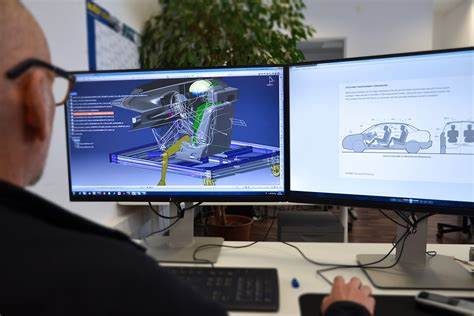Product design to manufacturing involves a seamless integration of various technologies to transform concepts into tangible products. CAD (Computer-Aided Design) allows for detailed and precise product design, creating digital models that serve as the blueprint. CAM (Computer-Aided Manufacturing) then takes these designs and translates them into instructions for machinery, ensuring accurate production. CAE (Computer-Aided Engineering) supports this process by simulating and analyzing performance under various conditions, optimizing the design for functionality and durability. 3D printing adds a layer of flexibility, enabling rapid prototyping and customization. Finally, a Blue Light Scanner provides high-resolution scans of physical objects, allowing for reverse engineering or quality control by comparing real-world parts to their digital models. Together, these technologies streamline the transition from conceptual design to final product manufacturing.

Product Design to Manufacturing

Services
Conceptual Design: Initial stage where ideas and product requirements are conceptualized before moving to detailed design.
Digital Twin: CAD models act as digital twins of the real product, allowing for accurate simulation and validation before production.
CNC (Computer Numerical Control): CAM utilizes CNC machines to perform precise machining, drilling, and cutting based on digital designs.
Quality Control: Blue Light Scanner and other metrology tools ensure the manufactured parts meet design specifications and industry standards.
PLM (Product Lifecycle Management): Ensures that all design, engineering, and production data is organized and accessible throughout the product’s lifecycle.
Automation: Robotics and automated systems enhance production speed, consistency, and cost-efficiency during the manufacturing process.
